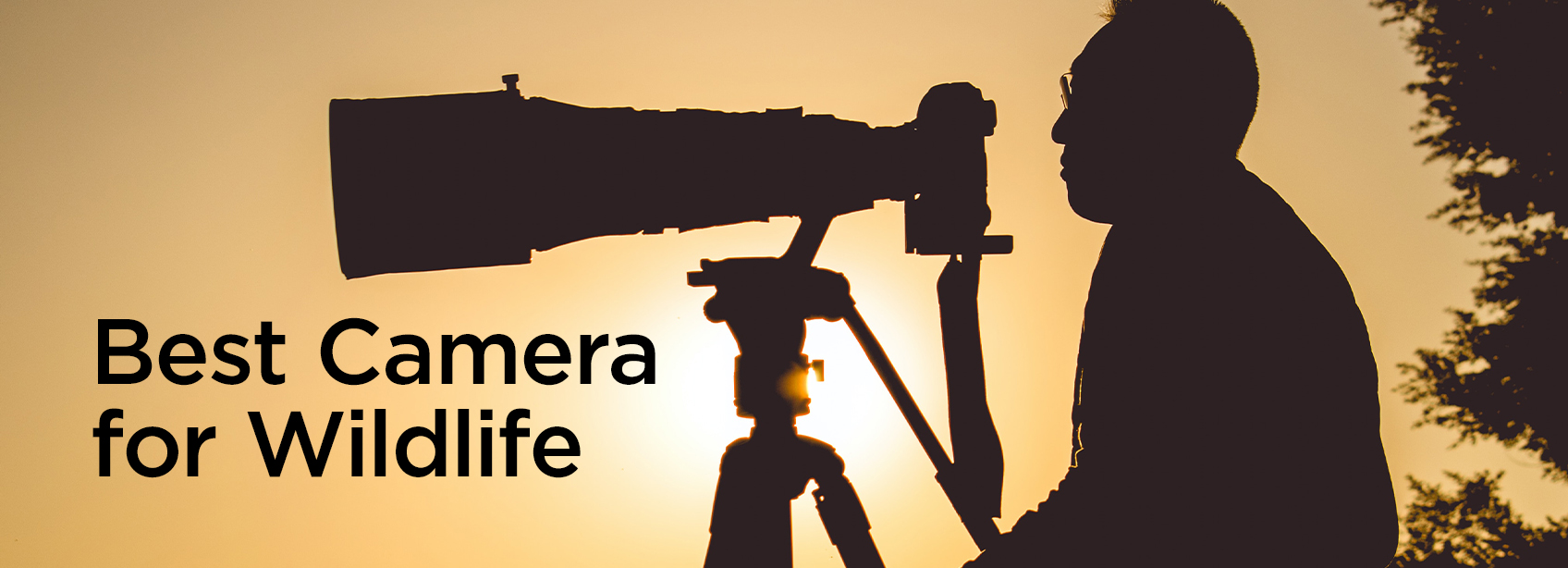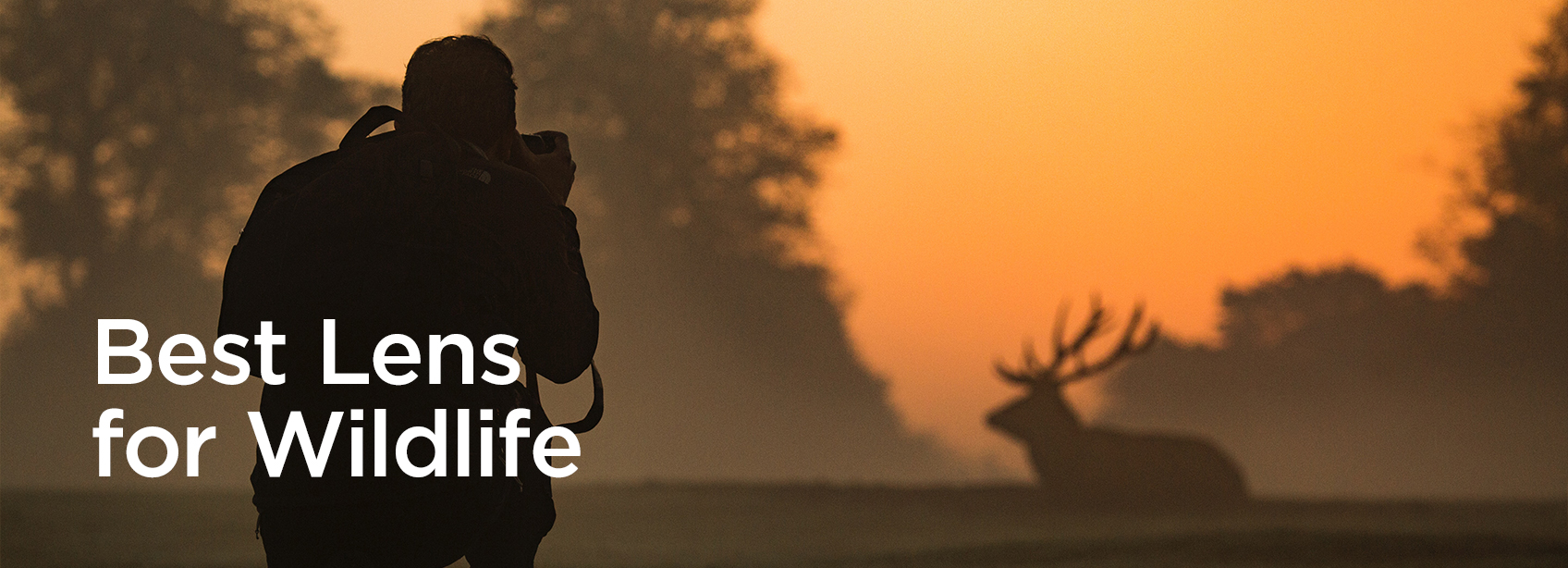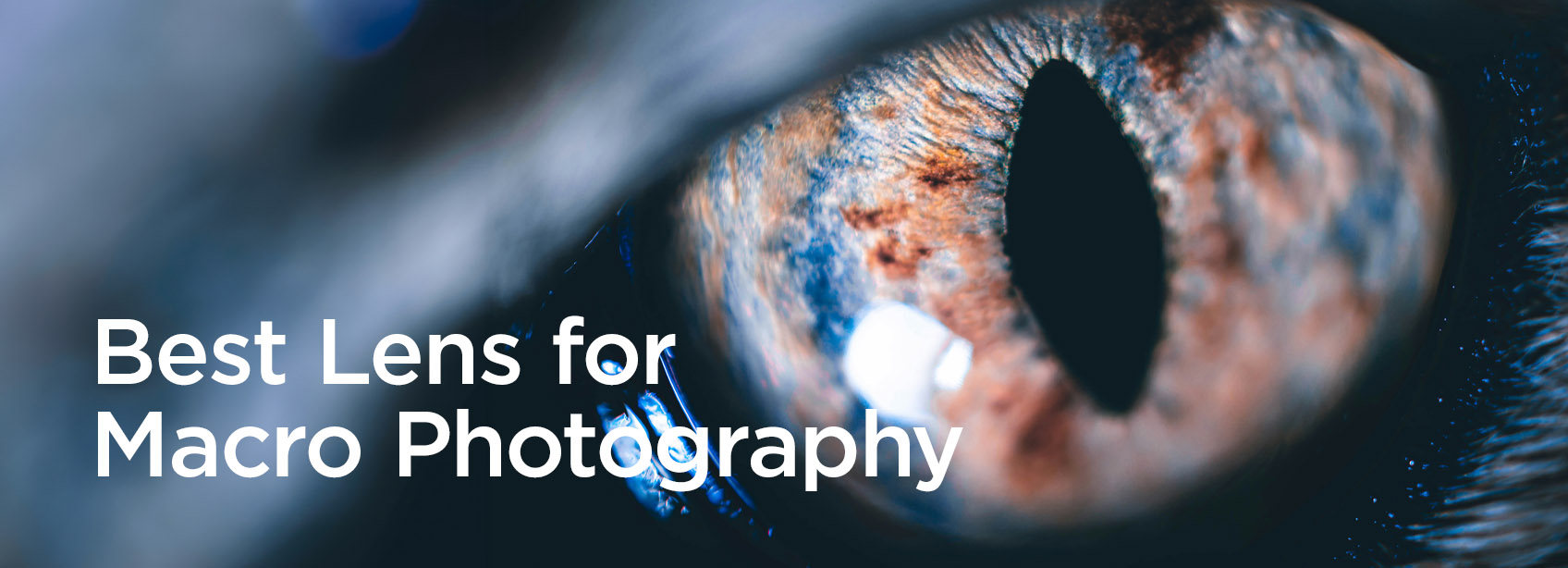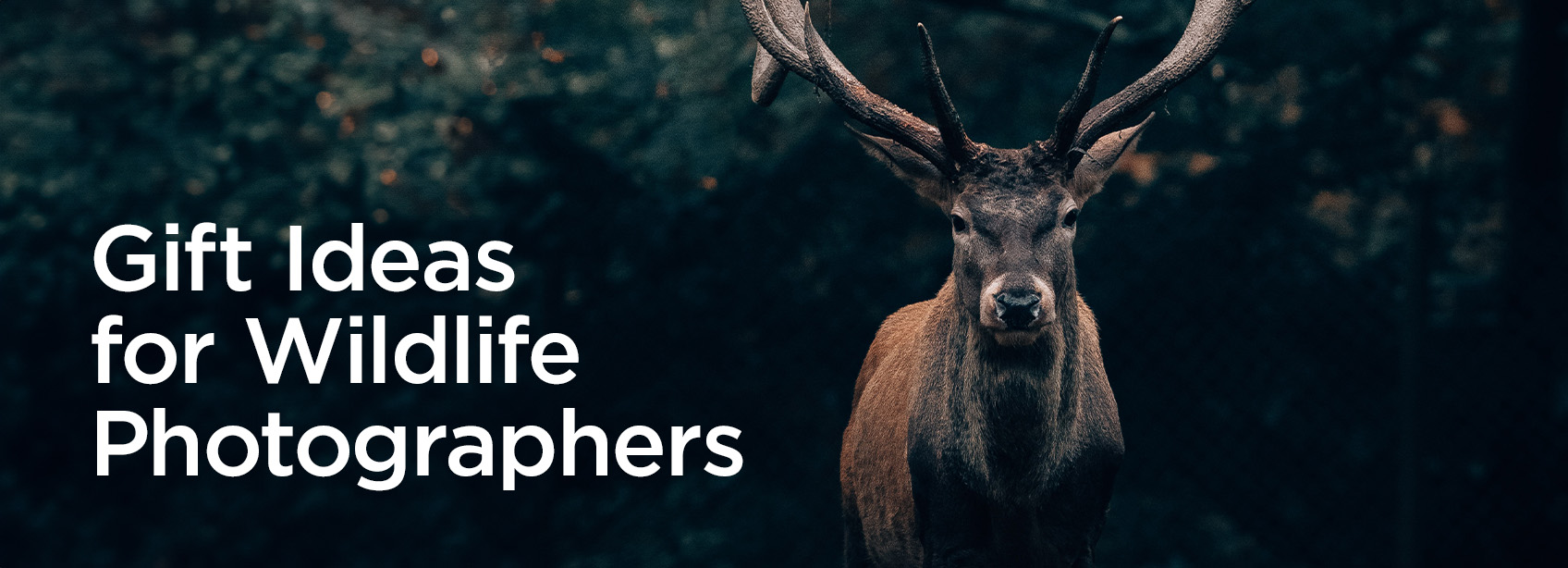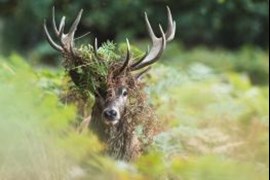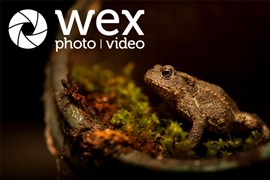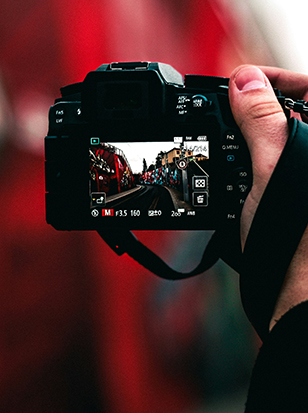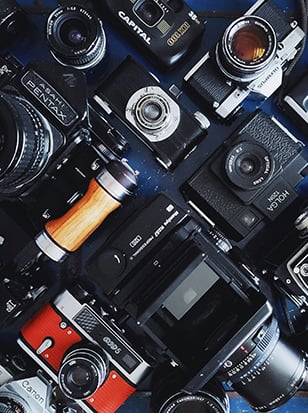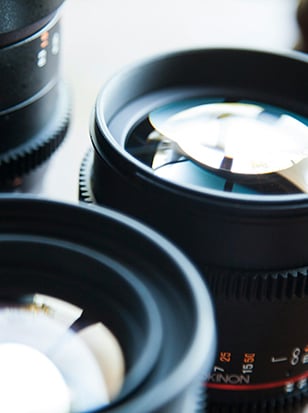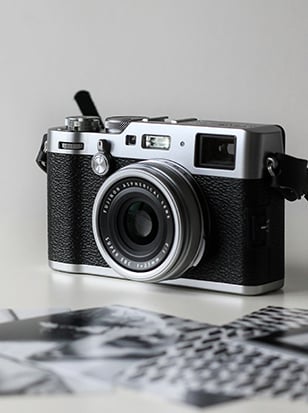
There are hundreds of wildlife photography opportunities hiding in plain sight, in our gardens and local habitats. You just need to know where to look and how to encourage wildlife to visit.
Rewilding your garden can be immensely rewarding. Not only does it benefit wildlife by increasing biodiversity, but it also offers endless photographic subjects throughout the day and across seasons.
We’re by no means gardening experts at Wex but when it comes to photography, we know our stuff and know a few professional photographers who can give insight to improving your garden photography. From researching local species and soil types, drawing up a simple plan, and strategically placing features like ponds and bird feeders, here we will explore how you can enhance both your wildlife habitats and photographic opportunities.
In this article, we will share seven garden wildlife and photography tips/opportunities for each month of the year, so you can make the most of your garden's natural beauty. As for kit, if you're wondering what might be your best lens options, you can always check out lens pages for all the major camera brands including Canon, Nikon, Sony, Fujifilm, Panasonic and OM System.
You can also check out professional wildlife photographer and former Wex Ambassador Tom Mason's take on how to photograph garden wildlife here.
Quick Navigation
Garden Wildlife Photography in January
As January unfolds, opportunities for captivating garden wildlife photography abound despite the winter chill. By using these tips and tricks, you can transform your garden into a winter wonderland teeming with photographic opportunities. Here's how you can enhance your garden's allure and capture stunning images:
- Winter Blooms: While the landscape may seem barren, keep an eye out for hardy winter blooms like snowdrops, hellebores, and winter jasmine. These resilient flowers provide welcome splashes of colour against the backdrop of frost or snow.
- Feeding Stations: Establish feeding stations to attract birds and other wildlife. Offer a variety of seeds, nuts, and suet to entice a diverse array of species. Place feeders strategically near natural cover to ensure safety for visiting wildlife and provide opportunities for authentic shots.
- Natural Perches: Incorporate natural perches such as branches or logs near feeders and popular wildlife spots. These perches not only enhance the aesthetic appeal of your garden but also provide ideal shooting locations for photographing birds and other visitors.
- Water Sources: Ensure access to fresh water by keeping bird baths unfrozen during the colder months. A heated bird bath or a regularly refreshed shallow dish can attract birds and other wildlife, providing unique photographic opportunities.
- Winter Visitors: Keep an eye out for winter visitors such as redwings, fieldfares, and bramblings. These migratory birds often flock to gardens in search of food during harsh weather conditions, offering photographers the chance to capture rare sightings against wintry backdrops.
- Wildlife Habitats: Create or maintain wildlife habitats within your garden, such as brush piles, log piles, and dense shrubbery. These habitats provide shelter and nesting sites for a variety of creatures, including birds, insects, and small mammals, enhancing the diversity of your photographic subjects.
- Patience and Persistence: Wildlife photography in January requires patience and persistence, as animals may be less active in the cold. Spend time observing your garden to anticipate wildlife behaviour and capture candid moments.
Garden Wildlife Photography in February
February may seem quiet but as winter loosens its grip, there are several garden jobs that can enhance both the aesthetics of your garden and entice wildlife to visit. Additionally, the changes you make here will set you up for the arrival of spring in the coming months.
- Spot Emerging Bulbs: Keep an eye out for snowdrops and other bulbs like daffodils and tulips. Consider planting less common bulbs such as the snake's-head fritillary for unique photo opportunities.
- Prune and Relocate: With many plants dormant, it's an ideal time for pruning and transplanting. Trim back overgrown bushes like Buddleia and consider relocating plants. While a wildlife-friendly garden can appear a bit untamed, a quick tidy-up is beneficial. Remove dead plants and fallen leaves, leaving some for compost to support insects and hibernating creatures.
- Feeders and Set-Up: Place bird feeders near cover for safety. Experiment with different seeds to attract a variety of birds, and consider adding natural perches near feeders for more natural shots.
- Capturing Wildlife: Whether using a hide or shooting from a window, patience and observation are key. Focus on capturing birds in natural surroundings rather than solely on feeders for more authentic images.
- Fieldfare/Redwing: Keep an eye out for these winter visitors, especially near berry bushes like rowan, cotoneaster, or pyracantha. Provide apples and pears as additional food sources to attract and photograph these shy birds.
- Snowdrops: Capture the delicate beauty of snowdrops, especially against a snowy backdrop. Experiment with low angles and wider lenses to showcase their abundance.
- Wood Mouse: Embrace the presence of rodents like wood mice in your garden. Consider using camera traps for candid shots, celebrating these often-overlooked garden inhabitants.
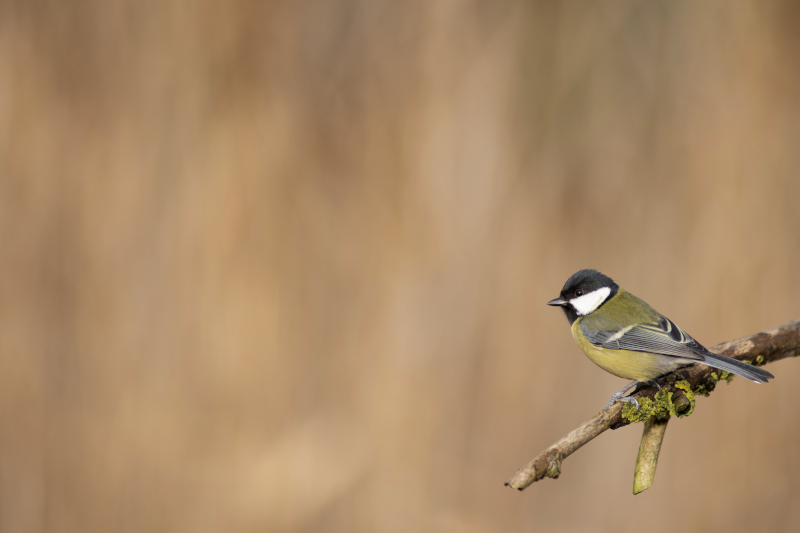
Garden Wildlife Photography in March
March marks a transition toward brighter days and renewed garden activity. As the days lengthen, wildlife begins to stir, offering photographers the chance to capture loads of captivating subjects. Embrace the evolving landscape and seize the opportunity to capture the beauty and diversity of garden wildlife as spring unfolds. Here's how to make the most of your garden photography this month:
- Bird Boxes: With birds seeking nesting spots, March is the perfect time to install bird boxes. Optimal placement is crucial, with boxes ideally positioned at least 5 ft high and sheltered from direct sunlight and wet winds. Vary the hole size to attract specific bird species, and consider surrounding vegetation for added cover.
- Wildflower Plugs: While seeding is challenging in March, planting wildflower plugs thrives in the moist soil. These small plants, available at garden centres, provide an immediate burst of colour and biodiversity. Strategically place plugs for a diverse floral display, attracting insects and enhancing photographic opportunities.
- Pond Maintenance: Despite the dormant appearance, early spring is an ideal time for pond maintenance. Clear away dead vegetation and thin out overgrown plants to promote new growth and maintain water clarity. Ensure a shallow weedy area for frogspawn and other pond inhabitants.
- Common Frogs: Anticipate the arrival of common frogs in your pond as a harbinger of spring. These amphibians congregate for breeding, offering excellent photo opportunities. Exercise patience and capture behavioural shots from a distance before attempting close-ups.
- Daffodils: Plant daffodil bulbs for a burst of vibrant colour and vital nectar for early pollinators. Opt for native varieties and plant in clusters for maximum impact. Monitor and divide clumps to encourage growth and spread throughout your garden.
- Wood Pigeons: Despite their commonality, wood pigeons offer striking photographic subjects with their distinctive markings. Practice bird photography and capture their slow-flight movements or distinctive behaviours. Employ a caged feeder to deter larger birds if desired.
- Bee Flies: Keep an eye out for bee flies, cleverly disguised as bees. These intriguing insects mimic bees to deter predators and seek out ground-nesting bee burrows for egg deposition. Observe their interactions with flowers and learn to distinguish them from true bees.
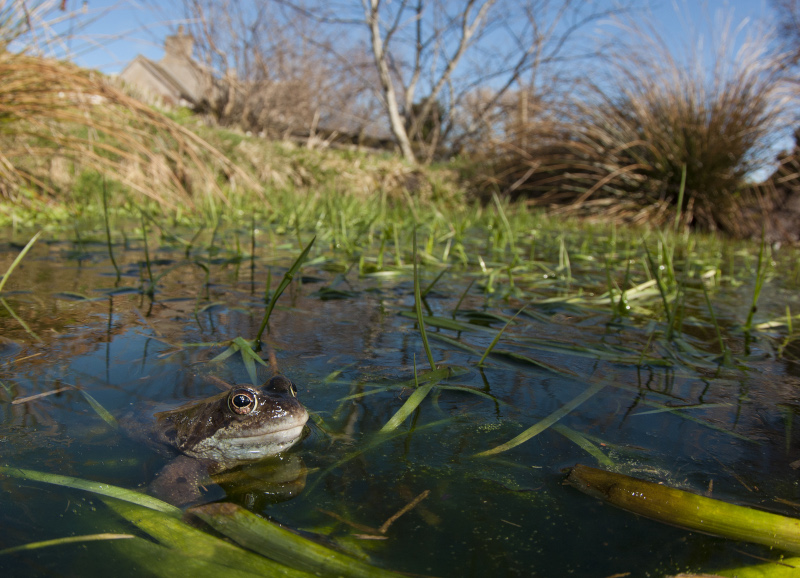
Garden Wildlife Photography in April
April brings a burst of life to our gardens. With longer days and warmer temperatures, wildlife activity reaches new heights, presenting photographers with a wealth of exciting subjects and endless opportunities to capture the beauty and diversity of wildlife. Here's how to make the most of your garden photography this month:
- Floral Splendor: Revel in the vibrant display of spring blooms adorning your garden. From daffodils to tulips, primroses to cherry blossoms, April offers a kaleidoscope of colours and textures. Experiment with different angles and perspectives to capture the essence of these fleeting floral displays.
- Pollinator Paradise: As flowers bloom, pollinators emerge in abundance. Bees, butterflies, and other insects flit from flower to flower, pollinating as they go. Set up near flowering plants with your camera ready to capture these vital interactions up close.
- Nesting Season: With the arrival of April, many bird species are in full nesting mode. Keep an eye out for nesting behaviours such as gathering nesting materials, courtship displays, and feeding fledglings. Respect nesting areas and use long lenses to capture intimate moments from a distance.
- Fledglings and Juveniles: April sees the emergence of young birds and mammals venturing out into the world. Look for fledglings learning to fly or young mammals exploring their surroundings under the watchful eye of their parents. Exercise caution and avoid disturbing nesting sites or young animals.
- Insect Life: From ladybugs to hoverflies, April sees a surge in insect activity. Explore the intricate world of macro photography as you capture the tiny details of these fascinating creatures. Patience is key as you wait for the perfect moment to capture their behaviour.
- Migratory Birds: April marks the peak of spring migration, with many bird species returning from their wintering grounds. Keep an eye out for colourful migrants such as swallows, warblers, and cuckoos as they make their way back to breed in the UK. Set up near bird feeders or known migration routes to increase your chances of spotting these elusive travellers.
- Garden Visitors: As the weather warms, your garden becomes a hub of activity for a variety of wildlife. From hedgehogs to foxes, April offers opportunities to capture these charismatic creatures in their natural habitat. Set up trail cameras or stake out known paths to catch glimpses of nocturnal visitors.
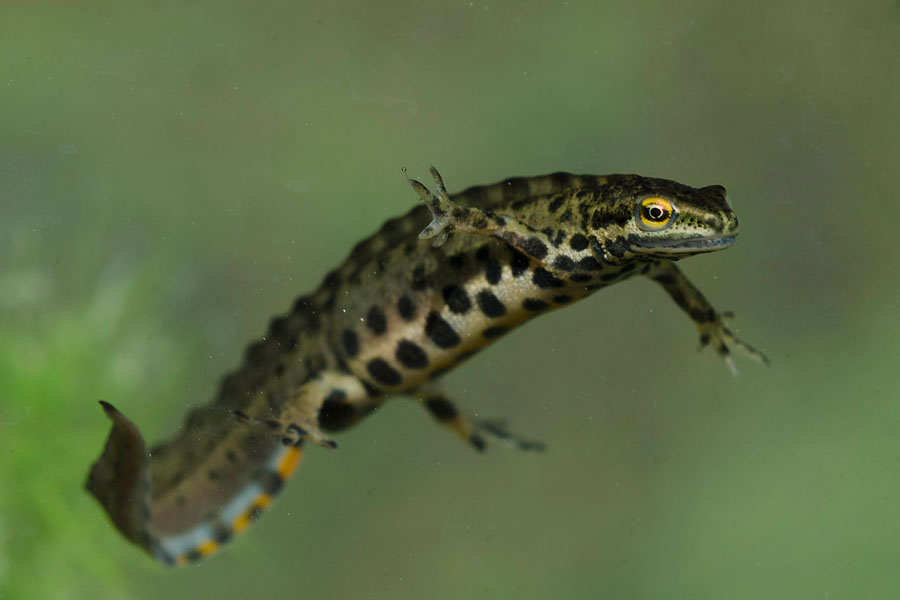
Garden Wildlife Photography in May
May signals the return of vibrant colours and bustling activity to our gardens. Wildflowers blanket the landscape, attracting all sorts of pollinators like butterflies, bees and beetles. This is the perfect time to explore the miniature jungle of your garden with a macro lens. Here's your guide to capturing stunning images this month:
- Frost-Free Gardening: With the threat of frost behind us, May is prime time for sowing seeds and planting vulnerable seedlings. Embrace the warm days and cool nights to kickstart growth in your garden. Remove any plastic coverings used for frost protection and consider planting vegetables if you're inclined towards gardening.
- Climbing Beauties: Train climbing plants like sweetpea, honeysuckle and clematis along trellises to create green havens on fences. Horizontal positioning encourages better coverage and provides insects with feeding and resting spots, attracting birds to hunt in your garden.
- Ladybirds (The Aphid Busters): Maintain a wildlife-friendly garden by avoiding pesticides and herbicides. You can combat aphid infestations naturally by washing them off or by manually collecting and relocating them to bird feeders. Ladybirds are excellent predators of aphids and can help keep their numbers in check. Equally, Ladybirds are a fantastic subject to photograph. With more than 40 species around the UK, you’re likely to see a few in your garden or local park.
- Photographing Nesting Birds: May sees many birds busy rearing their young. Use a long lens to capture nesting behaviours without disturbing the birds' natural routines. Morning is a busy feeding time, offering opportunities for photography. Experiment with different angles and consider setting up wide-angle shots near nest boxes for unique perspectives.
- Spotting Slow Worms: Keep an eye out for slow worms. These legless lizards thrive in compost heaps and log piles. Place mats, old carpet or wood pieces in corners of your garden to attract them and use a macro lens for close-up shots.
- Butterfly Photography: Take advantage of warmer weather to photograph butterflies like holly blues, brimstones, and red admirals. Approach them cautiously in the early morning when they're sluggish or use a longer lens as they become more active later in the day. Plant butterfly-friendly flowers like buddleia, knapweeds, scabious, and dog violets to attract these beautiful insects to your garden.
- Yellow Flag Iris: Capture the beauty of yellow flag iris, a common pond plant known for its large yellow flowers and habitat benefits. Be quick to photograph them while in full bloom, as they don't stay that way for long.
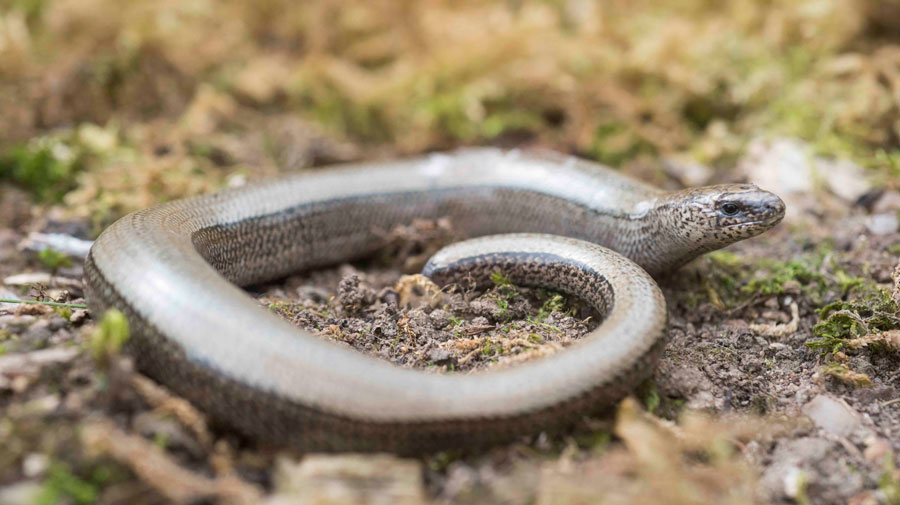
Garden Wildlife Photography in June
June invites us to enjoy the fruits of our gardening labour as our backyards burst with life and colour. Wildflowers, from poppies to ox-eye daisies, dot our landscapes with vibrant hues, attracting a flurry of insects like dragonflies and butterflies. However, with the bright sun comes heat that can parch leaves and ponds, so vigilance is key. Here's what you can do to make the most of your garden in June:
- Long Grass: Consider the benefits of leaving some areas uncut after “No Mow May”. Leaving some patching of flower growth will ultimately help the wildlife that visits your garden. Partial cutting allows for a mix of short and long grass areas, benefiting both aesthetics and biodiversity.
- Wood Piles: Create shelters for various species by stacking different types of wood like pine, oak and birch. These piles attract insects, frogs, hedgehogs and slow worms; all being fantastic photography subjects. Always source wood locally and avoid overharvesting to preserve habitat diversity.
- Water Sources: Ensure birds and mammals have access to water during warmer temperatures by placing bowls of water in the garden. This benefits both daytime and nocturnal visitors, including blackbirds, sparrows, foxes and hedgehogs.
- Floral Photography: Take advantage of flowers in full bloom for stunning photography opportunities. Experiment with angles and lenses to capture the intricate details and vibrant colours. Adjust shooting times based on lighting conditions for the best results.
- Dragonflies: Encourage dragonflies to your garden by providing suitable habitats like ponds with plant-filled margins and logs for basking. June is an excellent time to photograph these creatures, especially in the morning when they are more sluggish.
- House Sparrows: Support declining house sparrow populations by providing nest boxes and bird feeders. These sociable birds play a vital role in controlling garden pests and can become accustomed to human presence over time.
- Poppies: Plan ahead for poppy blooms by starting seeds in trays and transplanting them into the ground in January. Poppies prefer rough, disturbed soil and add vibrant splashes of colour to any garden.
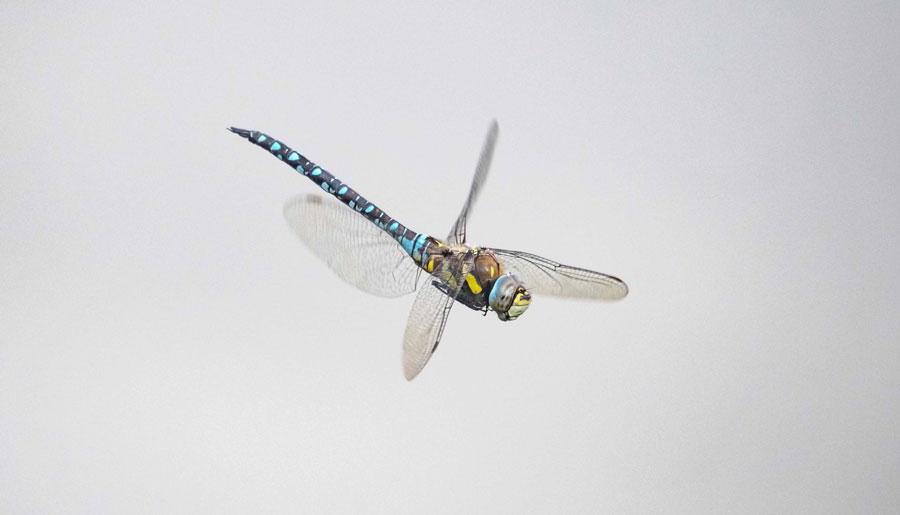
Garden Wildlife Photography in July
July brings scorching temperatures, which means we need to safeguard our garden plants and resident creatures from the heat. Sun-loving species bask in the warmth, while insects buzz among blooming flowers. Amidst the ongoing garden tasks, take a moment to cherish the tranquil evenings, appreciating the beauty of nature.
- Water Conservation: Manage water wisely, especially during warm spells. Some plants may require more water than usual, while others, like sedums and lavender, thrive in drier conditions. Invest in water butts for eco-friendly irrigation, prioritising plants' needs during dry periods.
- Embrace Undesirables: Consider the benefits of so-called "undesirable" plants like ivy and nettles. Ivy offers late-season blooms and winter berries, benefiting pollinators and wildlife. Nettles support numerous insect species, including butterflies, and provide food and habitat.
- Moth Traps: Explore the nocturnal world of moths by setting up moth traps. These traps attract a variety of moth species, offering opportunities for observation and photography. Opt for a warm, dry night for optimal results.
- Foxes: Observe urban foxes, particularly their cubs venturing out in July. Provide food sources like peanuts or berries to attract them to your garden. Use a long lens for capturing their behaviour and interactions.
- Viper's-Bugloss: Attract bees with Viper's-bugloss, a vibrant blue flower loved by pollinators. Plant in chalky soil for best results and document their interactions using a macro lens.
- Hummingbird Hawk-Moth: Look out for the elusive Hummingbird Hawk-Moth, attracted to buddleia, honeysuckle, or lavender. Capture their fast-paced movements with a fast shutter speed and long lens.
- Bats: Support bat populations by installing bat boxes, ideally above the second floor of your house. While bat photography can be challenging, dusk is the best time to spot them in flight.
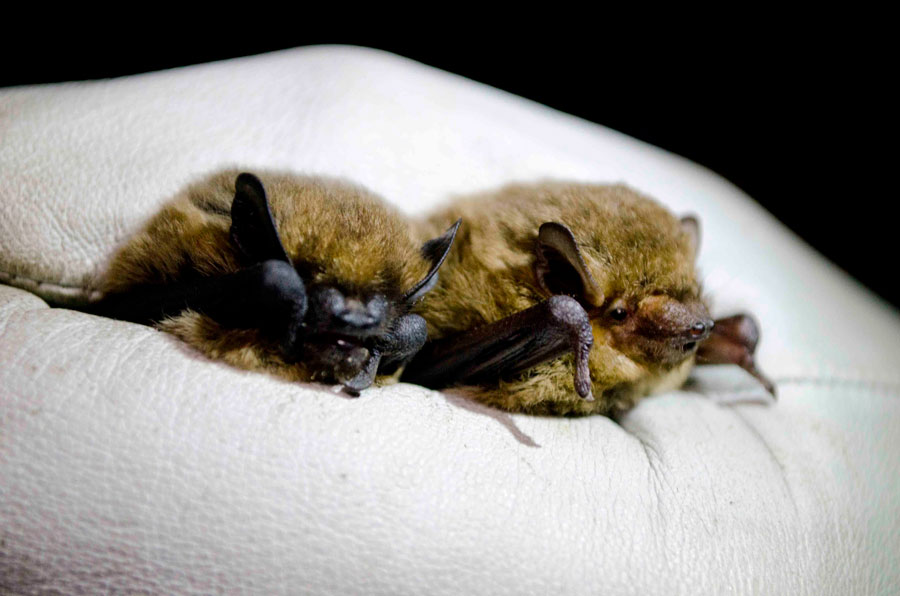
Garden Wildlife Photography in August
As summer reaches its peak, August brings a flurry of activity to our gardens. Vibrant flowers and plants attract pollinators and the warm temperatures encourage wildlife to thrive. From butterflies dancing among the flowers to birds feasting on ripened fruits, there's no shortage of photographic opportunities in our gardens and local parks.
- Monitor Water Needs: With prolonged periods of sunshine, ensure plants have adequate water. Pay attention to drought-sensitive species and consider mulching to retain soil moisture. Continue to utilise water butts for eco-friendly irrigation.
- Celebrate Wildflowers: Embrace the diversity of wildflowers in full bloom. Capture the intricate details of petals and the hustle and bustle of insects seeking nectar. Experiment with angles and lighting to create captivating compositions.
- Butterfly Bonanza: August marks the peak of butterfly activity, with numerous species taking flight. Keep your camera ready to capture these colourful creatures as they flit from flower to flower. Early mornings and late afternoons offer ideal lighting conditions for stunning butterfly portraits.
- Bird Watching: Keep an eye out for fledglings as many bird species raise their young during this period. Document their behaviours, from feeding to fledging, while respecting their space and nesting sites. Set up bird feeders to attract a variety of avian visitors to your garden.
- Harvest: Take advantage of the bountiful harvest season by photographing ripened fruits and vegetables. From plump berries to juicy tomatoes, showcase the abundance of nature's bounty in your garden. Consider incorporating harvested produce into your wildlife photography compositions for added interest.
- Dragonflies: Explore the world of dragonflies as they dart gracefully around ponds and water features. Use a fast shutter speed to freeze their rapid movements and capture intricate details of their iridescent wings. Position yourself near water bodies during the warmest hours of the day for optimal dragonfly photography opportunities.
- Evening Visitors: As the sun sets, nocturnal creatures emerge, offering unique photography opportunities. Set up moth traps to observe and photograph these fascinating insects under the cover of darkness. Experiment with long exposure techniques to capture the ethereal beauty of moths in flight.
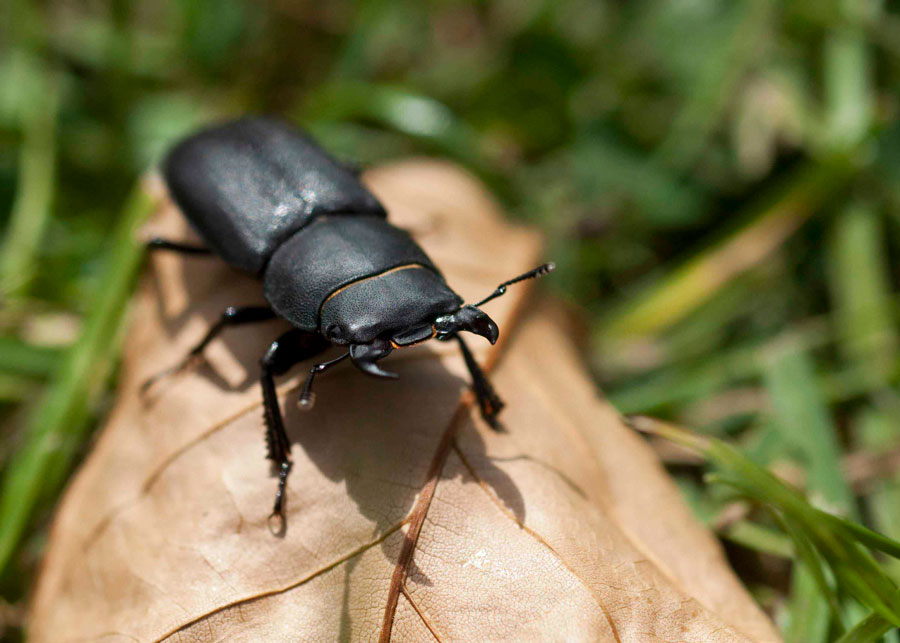
Garden Wildlife Photography in September
September marks a pivotal moment in the garden, signalling the transition from summer to autumn. As the vibrant hues of summer fade, leaves take on rich shades of red and brown, and the air begins to cool. It's a time of change, where the garden prepares for the coming seasons, and wildlife readies itself for the shift. Because of this, our gardens require some preparation and by tending to your garden’s needs, you can create a thriving habitat for wildlife over the coming months; which will open up all sorts of photographic opportunities.
- Meadow Maintenance: By September, most meadows have reached their peak and it's time to trim them down. But before you start, consider collecting seeds for future planting. These seeds can also make thoughtful gifts for fellow gardeners, sharing your passion for wildlife.
- Hibernaculum: While hedgehog houses are common, don't forget about other garden inhabitants like frogs, newts, and slow worms. Building a hibernaculum provides these creatures with a safe haven during the colder months, contributing to a thriving ecosystem in your garden.
- Embrace the Harvest: September marks the beginning of the harvest season, with seeds, nuts, and berries in abundance. While blackberry bushes can be invasive, with proper pruning, they offer valuable food sources for wildlife and a bounty of free fruit for yourself.
- Magpies: Often overlooked, magpies are fascinating garden visitors. Despite their mischievous reputation, their striking appearance makes for captivating photography subjects. Setting up a feeding station and using a long lens can help capture their beauty.
- Ladybirds: These helpful insects play a crucial role in controlling garden pests like aphids. With over 40 species in the UK, they offer a colourful and photogenic subject for autumn photography. Setting up a bug hotel can attract them to your garden.
- Clover: While often ignored, clover provides essential nectar for bees and other pollinators. Leaving patches of clover in your lawn can support these vital insects, adding colour and biodiversity to your garden.
- The Common Toad: September sees the last of the toadlets leaving ponds and venturing into the garden. These tiny amphibians explore their surroundings, preparing for the coming winter. While elusive during the day, they offer unique photographic opportunities with a long macro lens.
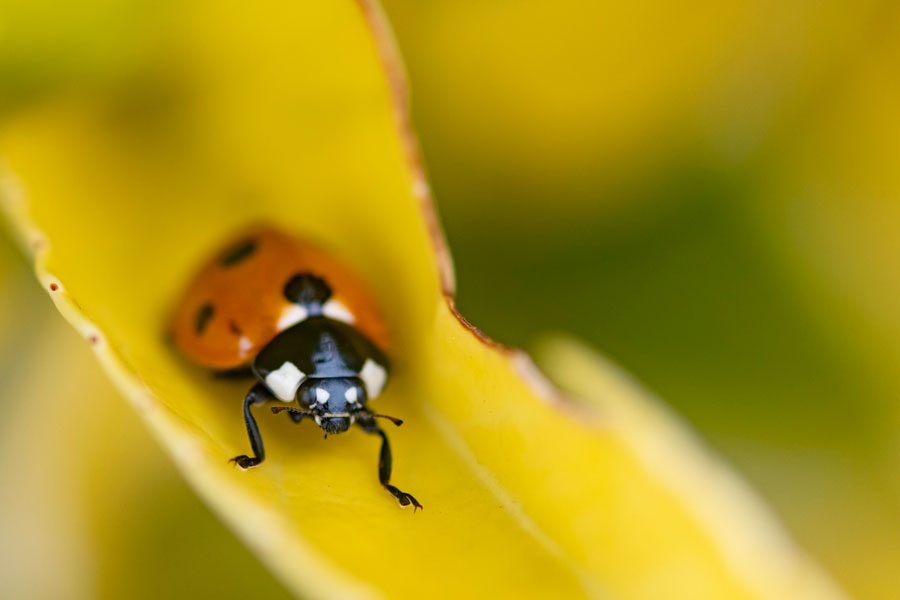
Garden Wildlife Photograph in October
As October rolls in, autumn asserts itself with falling leaves and shorter days, marking a shift in the garden landscape. While stags rut and birds migrate in the countryside, closer to home, you'll notice the transformation of leaves and the emergence of fungi, providing ample opportunities for macro photography. There are several things you can do to increase those opportunities.
- Pile up Leaves: Embrace the seasonal mess by piling up fallen leaves in a corner of the garden. Come spring, you'll have rich compost while providing habitat for worms, woodlice, and hedgehogs seeking shelter.
- Sow Seeds: Some seeds, like yellow rattle and daffodils, benefit from colder temperatures to germinate. Plant bulbs and scatter seeds to prepare for vibrant spring blooms.
- Trim Back Bushes and Trees: With nesting season over, it's time to trim bushes and trees. Pruning encourages new growth and prevents seeds from spreading uncontrollably while providing shelter for birds.
- Fungi: October is prime time for fungi sightings. Explore your garden for mushrooms like field mushrooms and fly agaric, but be cautious as some species are toxic. Capture their intricate details with macro photography before they wilt or become a slug's snack.
- Hedgehogs: As hedgehogs prepare to hibernate, provide shelters like hedgehog houses or leaf piles. Monitor their nocturnal activities with infrared cameras, ensuring their safety and comfort.
- Green Shieldbug: This hardy insect braves the colder months as an adult, changing colour to blend with autumn foliage. Spot them on bushes and capture their intricate details in photographs.
- Blackbird: With softening ground and abundant fruits, blackbirds feast on worms and berries. Set up bird feeding stations and patiently wait for close-up photo opportunities.
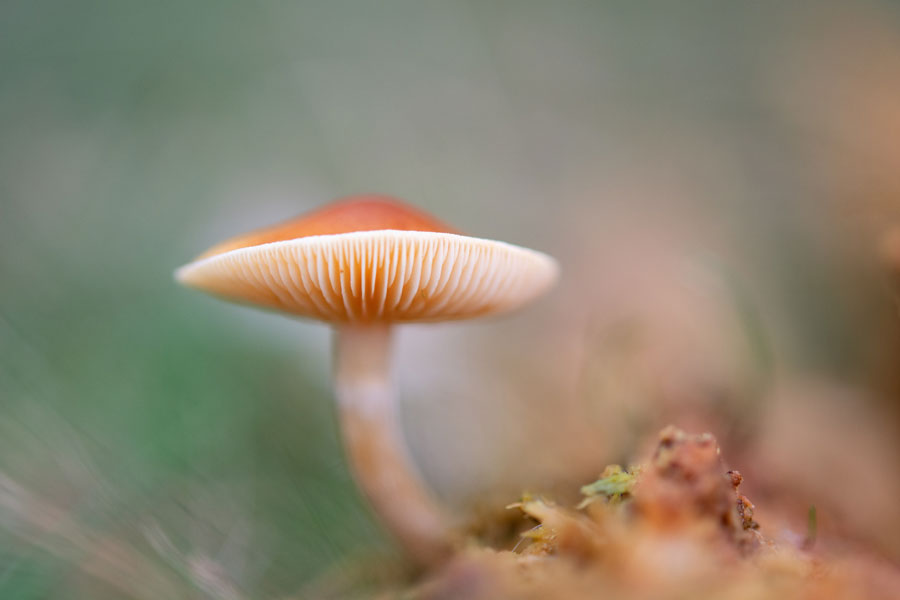
Garden Wildlife Photography in November
November offers a clean canvas for garden planning amid dying vegetation. While occasional mild spells persist, preparing for frost becomes paramount. Here's how you can ready your garden while nurturing its wildlife inhabitants:
- Seed Your Lawn: Enhance your lawn's biodiversity by sowing low-growing plants like Tormentil, Self-heal, and Speedwell. These provide food for pollinators without compromising their function as a lawn. Consider early-flowering bulbs such as Snowdrops and Crocuses for a burst of spring colour.
- Get the Feeders Ready: As cold weather sets in, replenish bird feeders with a mix of seeds and fat balls. Regularly clean feeders to prevent diseases like Tritrichomonas and bird flu. Establishing feeding routines attracts a variety of bird species, offering ample photographic opportunities.
- Don't Disturb Some Areas: Neglected corners of the garden, often overlooked, serve as havens for wildlife. Embrace these quiet spaces, allowing nature to thrive undisturbed. Self-seeding plants and natural habitats like old plant pots attract diverse wildlife while reducing your gardening workload.
- Embrace the Decay: Instead of discarding fallen leaves and fruit, utilise them to create habitats for hedgehogs, frogs, and invertebrates. Composting garden waste provides shelter and sustenance for wildlife while offering rich photographic opportunities amidst the vibrant colours of decay.
- November Critters: Starlings, though voracious, present captivating photographic subjects with their iridescent plumage. Worms, often overlooked, play vital roles in garden ecosystems and offer readily available photographic subjects. Keep an eye out for Red Admiral butterflies, emerging on mild days to forage for food.
- Protect Vulnerable Plants: As frost becomes more frequent, cover delicate or non-native plants with sheets to shield them from cold damage. This simple precaution preserves their health and vitality through the winter months.
- Provide Shelter: Consider installing additional shelters for garden wildlife, such as hedgehog houses or piles of leaves. These structures offer refuge from the cold and protection from predators, supporting the survival of various species during the winter season.
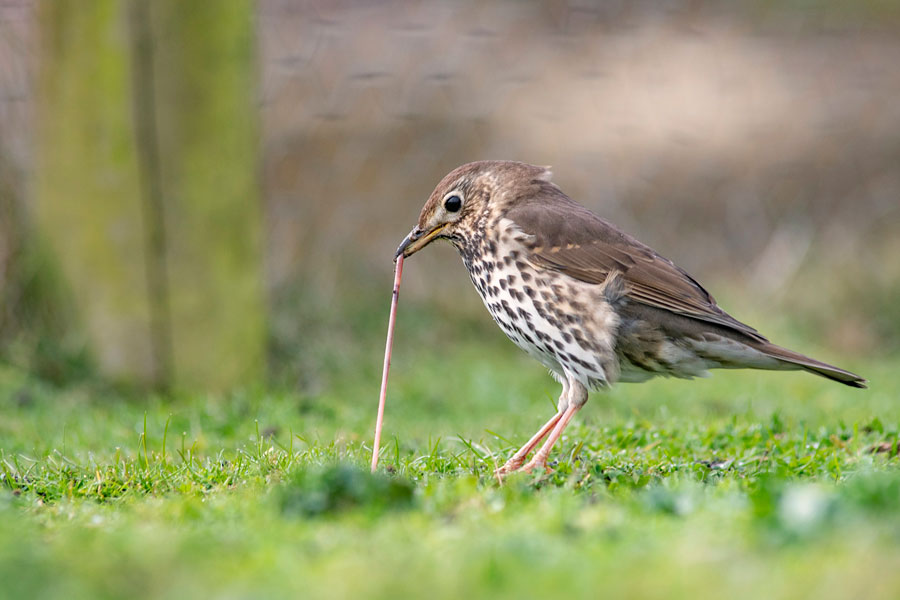
Garden Wildlife Photography in December
As the festive season approaches, there's still plenty for wildlife enthusiasts and photographers to do in the garden! It is important to prepare for colder weather by protecting vulnerable plants. Take advantage of overcast days for even lighting in your wildlife photography, and remain vigilant for opportunities to capture captivating images in your garden.
- Plant Trees and Shrubs: With many plants entering dormancy due to the cold, it's an ideal time to transplant bushes or small trees within the garden or plant new ones. Opt for winter-flowering varieties like Mahonia to support pollinators.
- Open up the Ice: Prevent snowfall from blocking light access to frozen ponds, which could deprive fish and frogs of oxygen. Instead of smashing the ice, melt a hole using hot water to avoid shocking the pond's inhabitants.
- Cat Proofing: While cats do make captivating photographic subjects. They can be a nuisance for garden wildlife. Create hiding spots for small animals and use deterrents like spikes to minimise their impact.
- Robin: Capture the quintessential Christmas bird, the robin, with classic shots or wait for snowfall to create striking contrasts. These bold birds are surprisingly tame and fiercely competitive for territory.
- Grey Squirrel: Despite their sometimes troublesome behaviour, grey squirrels offer amusing photographic opportunities. Get low and use a wide aperture to focus on their expressive antics in the garden.
- Ring Necked Parakeet: These exotic birds, now common in UK gardens, make stunning subjects with their vibrant green plumage. Wait for bold contrasting backgrounds to highlight their beauty.
- Grey Wagtail: If you have a large pond, you may attract winter visitors like the grey wagtail. Use a long lens and patience to capture these skittish birds, possibly providing a resting spot for clearer shots.
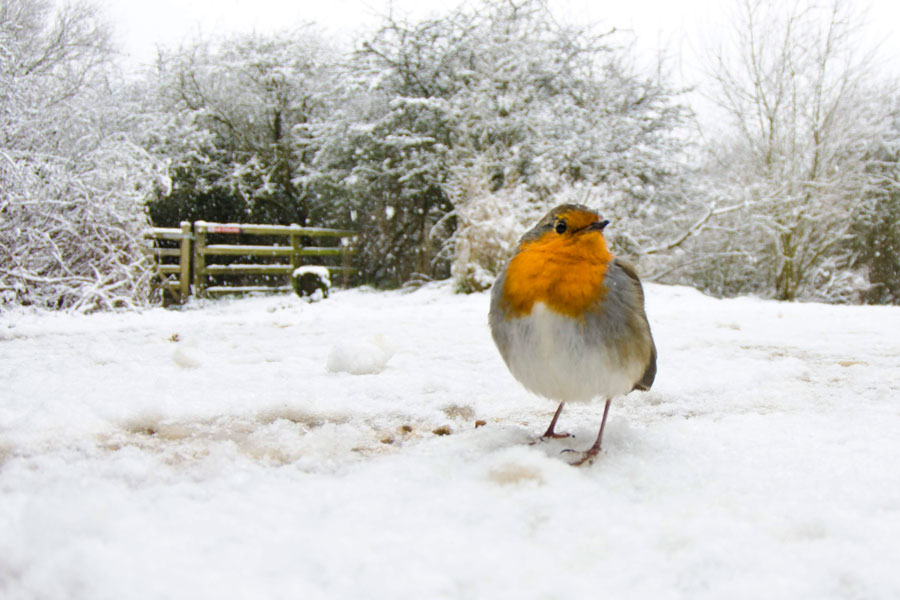
Videos
Related Buying Guides
FAQs
What equipment do I need for garden wildlife photography?
To capture stunning garden wildlife photos, you'll need a DSLR or mirrorless camera and ideally a telephoto lens, preferably with a focal length of at least 300mm. A tripod can also be useful for stabilising your shots, especially when using longer lenses. However, you can use other camera lenses and this can also help you get creative with your photography.
How can I attract wildlife to my garden for photography?
To attract wildlife to your garden, consider planting native flowers and shrubs, providing bird feeders and baths, and creating habitats like ponds or brush piles. Patience is key; establishing these features may take time, but they'll eventually attract a variety of wildlife for you to photograph.
How can I get close to wildlife in my garden without scaring it away?
To approach wildlife without causing a disturbance, move slowly and quietly, avoid sudden movements, and dress in neutral colours that blend into the environment. Using a blind or hiding behind natural features can also help you get closer without spooking the animals.
How can improve my photographs of birds in my garden?
To capture great bird photos in your garden, set up bird feeders or baths near your shooting location to attract them. Use a telephoto lens to get close-up shots without disturbing them, and be patient, as birds may take time to approach and become comfortable with your presence.
How can I edit my garden wildlife photos for the best results?
When editing garden wildlife photos, focus on enhancing the natural beauty of the scene rather than altering it drastically. Adjust exposure, contrast, and colour balance to bring out details, and consider cropping to improve composition. Avoid over-processing, which can make the image look unnatural.
What are some safety precautions to take when photographing wildlife in my garden?
While photographing wildlife in your garden, be mindful of potential hazards such as poisonous plants and biting insects. Maintain a safe distance from potentially dangerous creatures, and avoid disturbing nesting sites or dens where animals may feel threatened.
How can I get started with garden wildlife photography as a beginner?
Begin by familiarising yourself with the wildlife in your garden and learning their habits and behaviours. Start with basic equipment such as a camera with a zoom lens, and experiment with different settings and techniques. Be patient and observe your surroundings.

